
Searching for moths
Vinod and I have a habit of photographing moths whenever we come across them, and we’ve seen some fascinating ones, like the Lunar moth, Owl moth, and Monkey moth, during our travels to places like Parambikulam, KMTR, and other unique forest areas. On a recent trip to Northeast India, Vinod would wake up at night to check for moths on the walls, and we were amazed by how many we spotted. Despite this, we’ve never made a special effort to attract moths, such as using moth screens or placing rotten fruit.
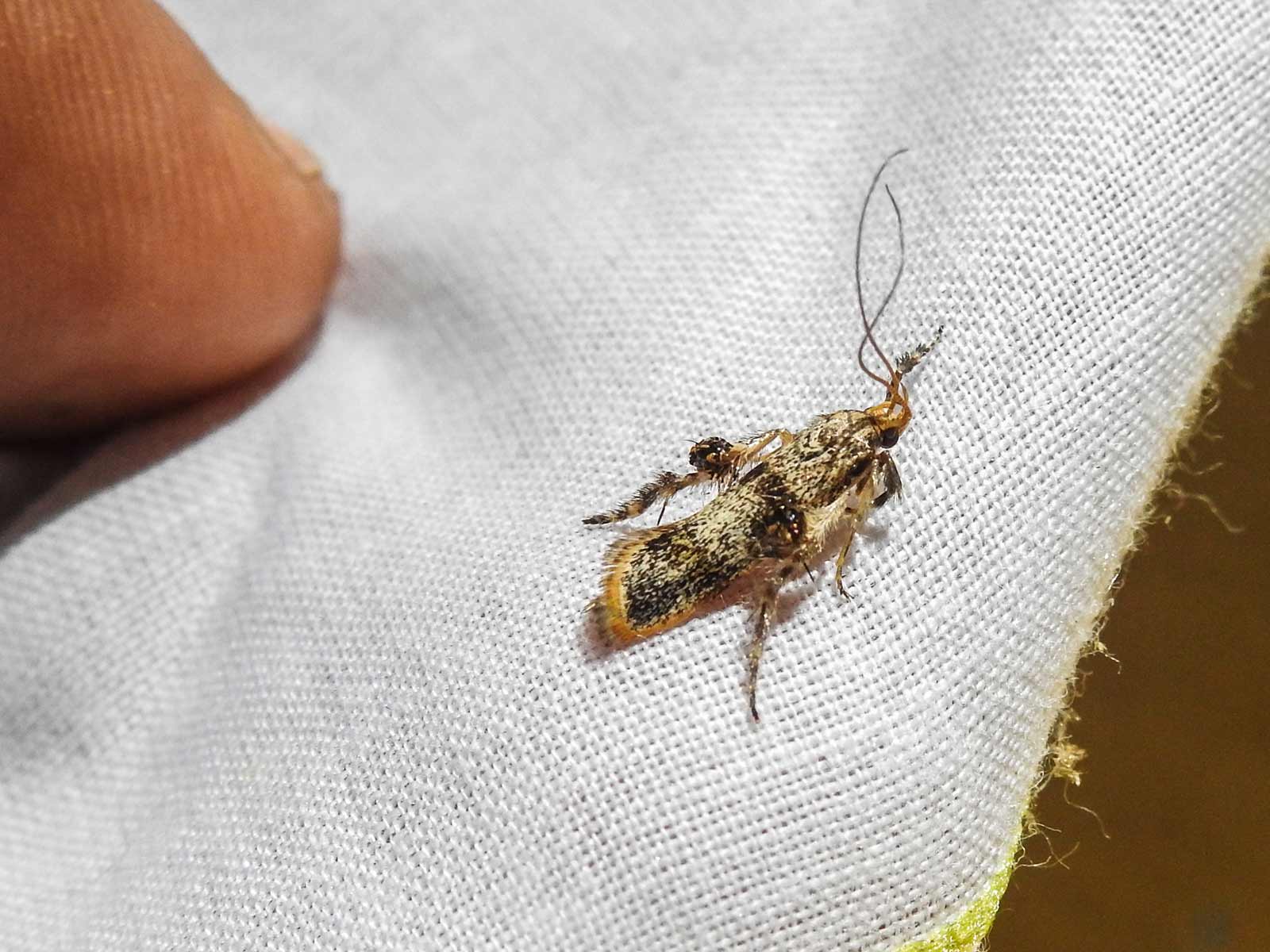
After recently meeting moth expert Mr. S. Thalavaipandi, we had the chance to dive deeper into the world of moths. Our first attempt at setting up a moth screen was in Vallanadu Blackbuck Sanctuary, but since we hung the screen near the forest quarters where there was light pollution, we only attracted a few micro moths and some others. During National Moth Week, we set up a moth screen at home, but unfortunately, the giant lizards on the walls kept the moths away. We also visited Kalikesam eco camp for moth watching, though the results were underwhelming. Our next venture was in Sirumalai, where we teamed up with Mr. Thalavaipandi, Mr. Thanigaivel, and Mr. Rameshwaran. Thalavaipandi brought a small genset, allowing us to set up a moth screen anywhere in the forest.
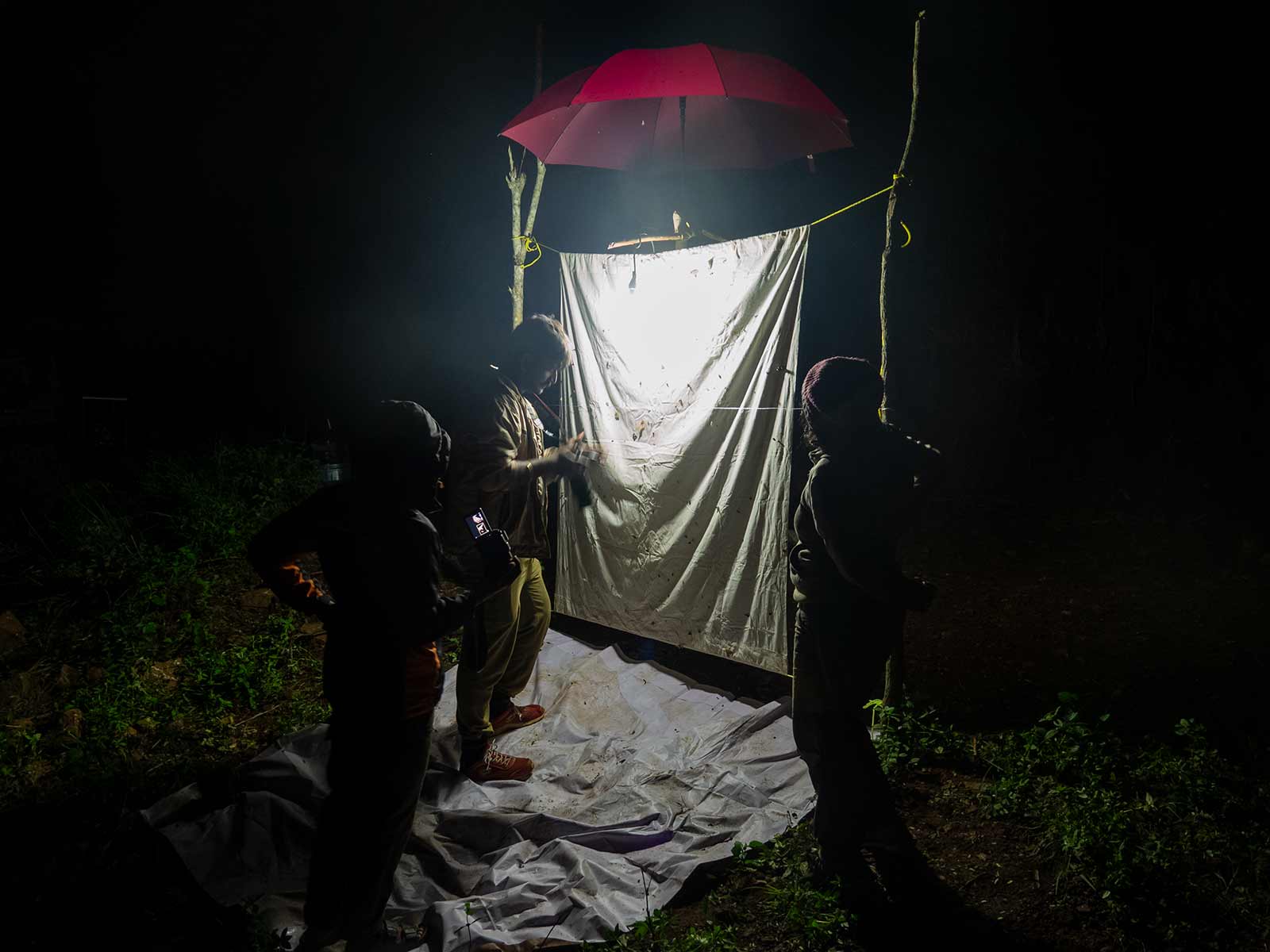
SETTING UP A MOTH SCREEN
On the day we arrived at Sirumalai, we took a short walk and spotted a few moths resting on leaves. As evening approached, it began to drizzle, but we headed into the forest, carrying our dinner and moth-screening equipment. The forest floor was crawling with leeches, and with the rain, setting up the moth screen proved to be a bit challenging. However, within seconds of setting it up, moths started flocking to the screen. The screen was placed on a slope, which made it a bit uncomfortable to watch the moths, but Thalavaipandi and Vinod eagerly photographed all the moths that landed.
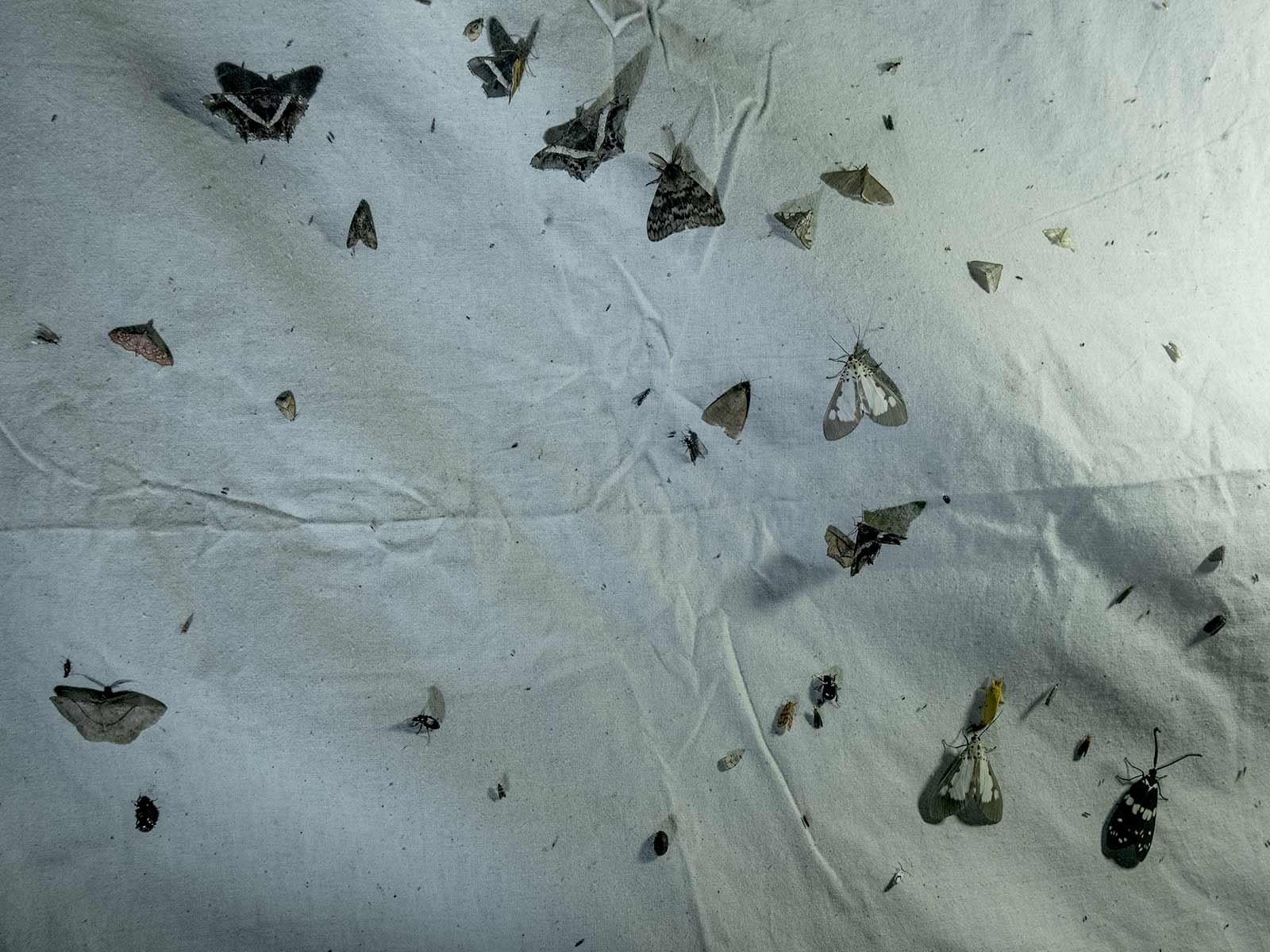
I had a severe headache, so I stayed in the van, quietly watching the scene unfold in front of me. After about an hour, as the moth activity picked up, I decided to climb the slope to take a closer look. The intricate patterns on each species were truly mesmerizing. When we finally called it a night and turned off the lights, the moths, especially the Monkey moths, started landing on our heads and hands. It was such a unique and wonderful experience.
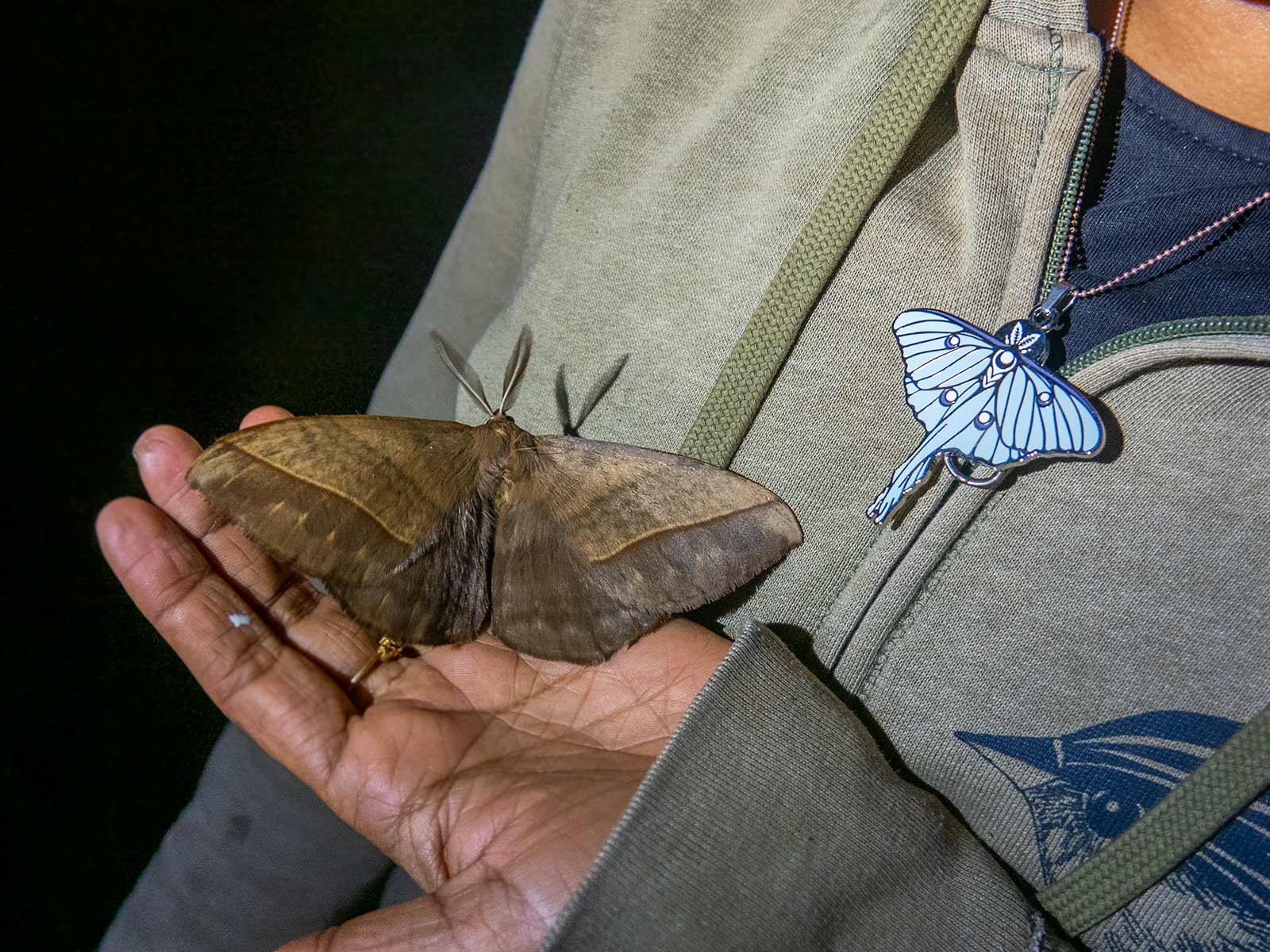
Vinod and Thalavaipandi were up early, checking for moths around our campsite and found a few. On the second day, the three of us went on a recon to find a better location for the moth screen, this time without any leeches. Since the rain had stopped, we were hopeful for more moths and found the perfect spot near a waterfall.
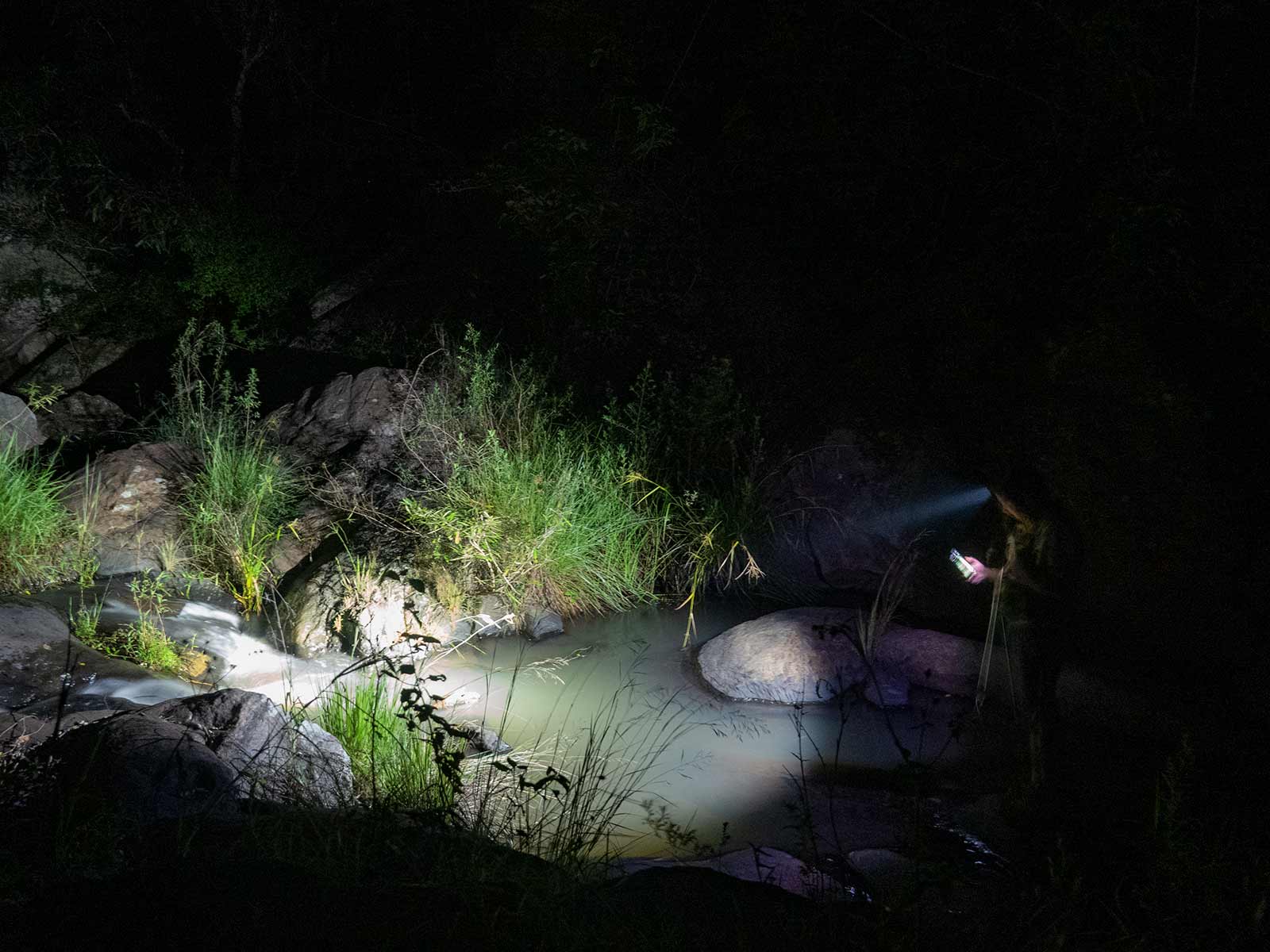
With the previous day’s experience in mind, we arrived at the spot earlier, setting up our gear at twilight. Thousands of bats flew above us as we enjoyed setting up the moth screen with the genset in the leech-free forest area. While walking around, Thanigaivel came across a small bamboo pit viper.
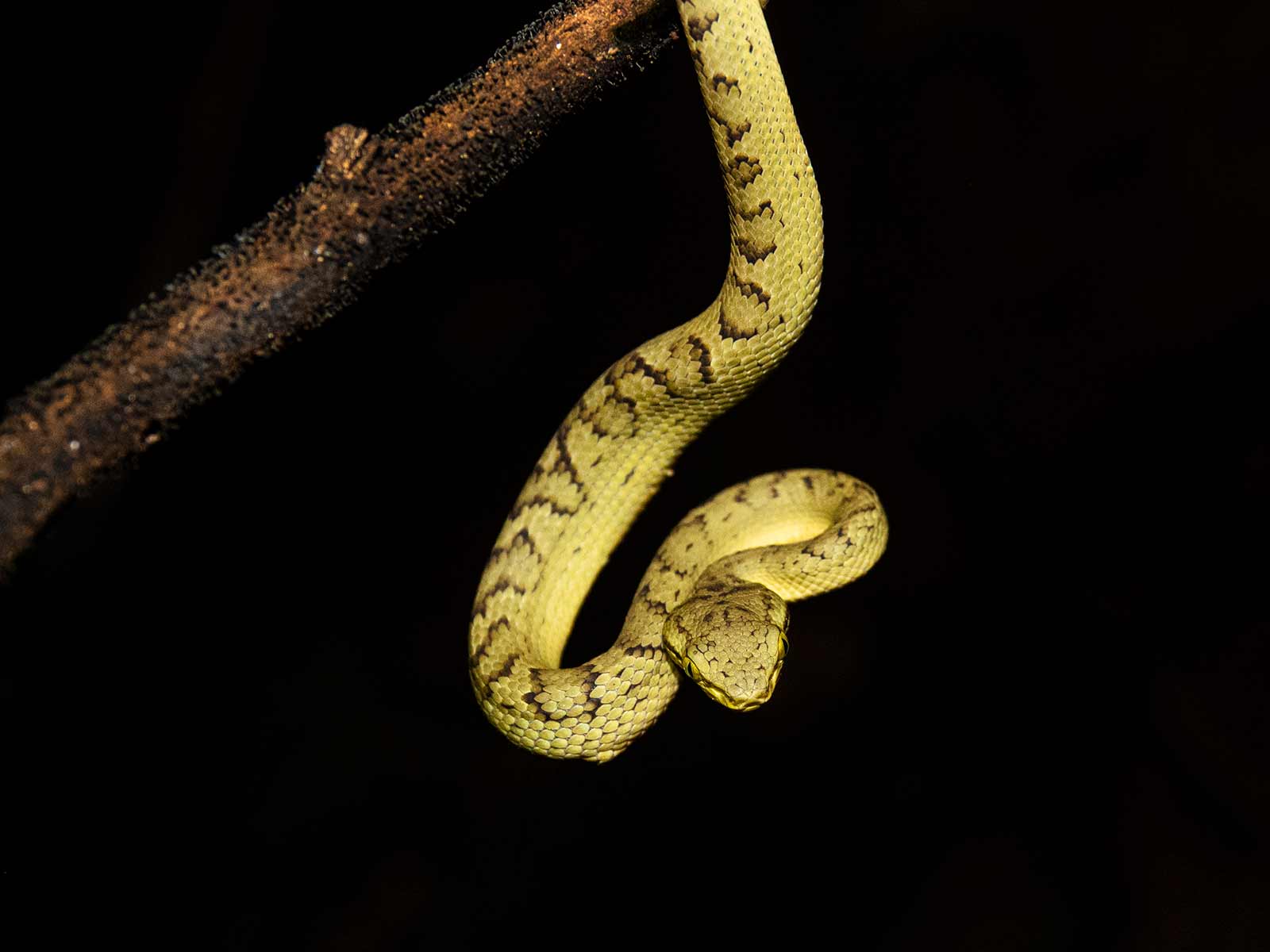
NIGHT EXPLORATION
As night fell, moths slowly began to arrive, and soon we lost track of what we had photographed. After observing many moths, we decided to take a break and walked over to the nearby waterfall. This was only the second time I’d seen a waterfall at night, the first being Jog Falls in Karnataka, which is a large tourist attraction. This one was smaller and more secluded, making it a fresh and enjoyable experience. We also spotted a centipede out for a stroll and kept an ear out for owls, though we didn’t hear any calls.
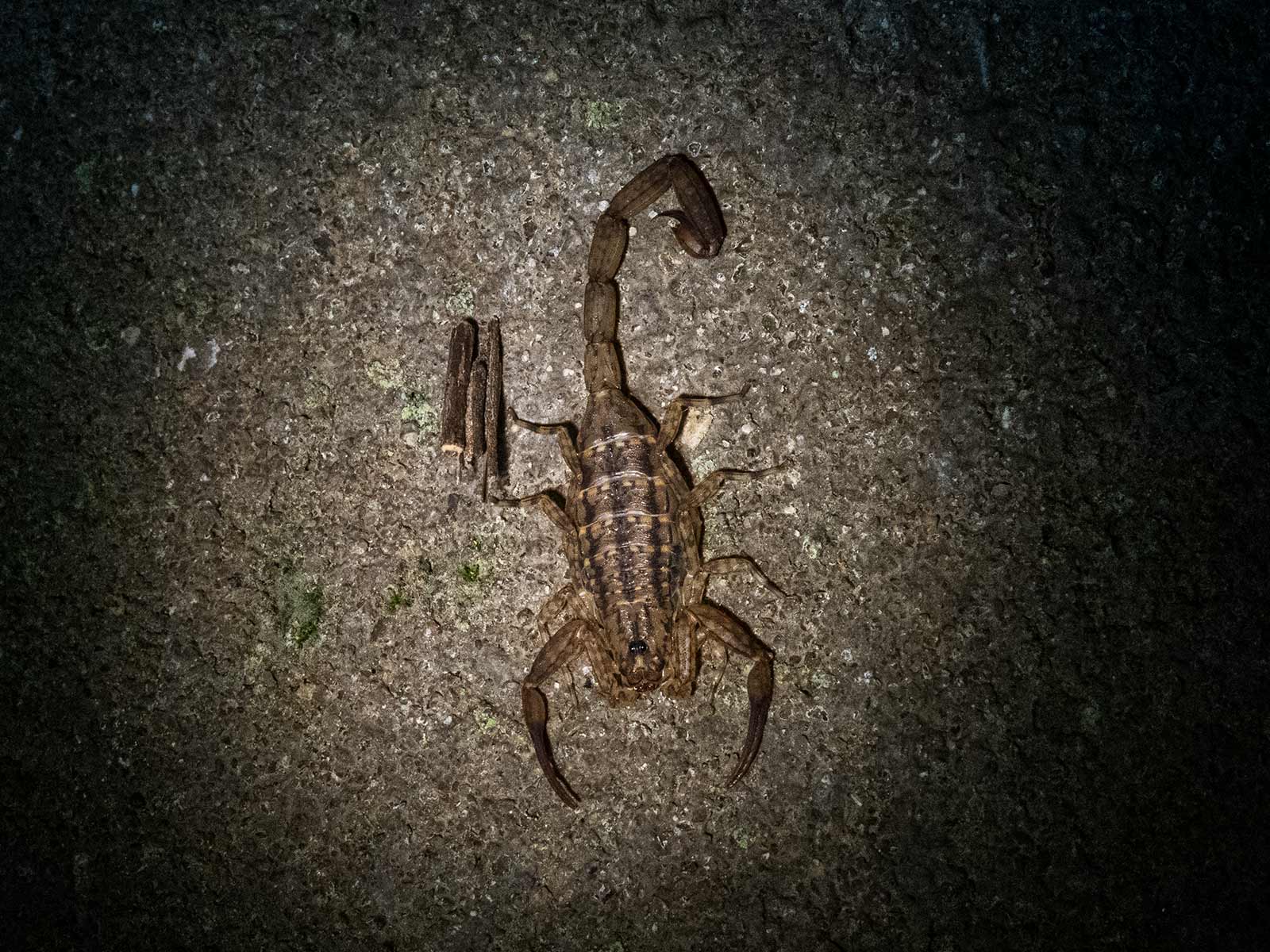
Improved text:
“We returned to find a swarm of hawk moths, including the striking Marumba dyras and Marumba nympha, gathered around our screen. Other notable moths we observed were Comostola laesaria, Idea species, Ourapteryx marginata, Pingasa ruginaria, and Yepcalphis dilectissima. We continued our moth watching until the generator ran out of fuel, forcing us to call it a night. As we were packing up, Thalavaipandi discovered a stunning green moth, an Agathia species, resting on a blade of grass. It was one of the most beautiful moths we had ever seen.”
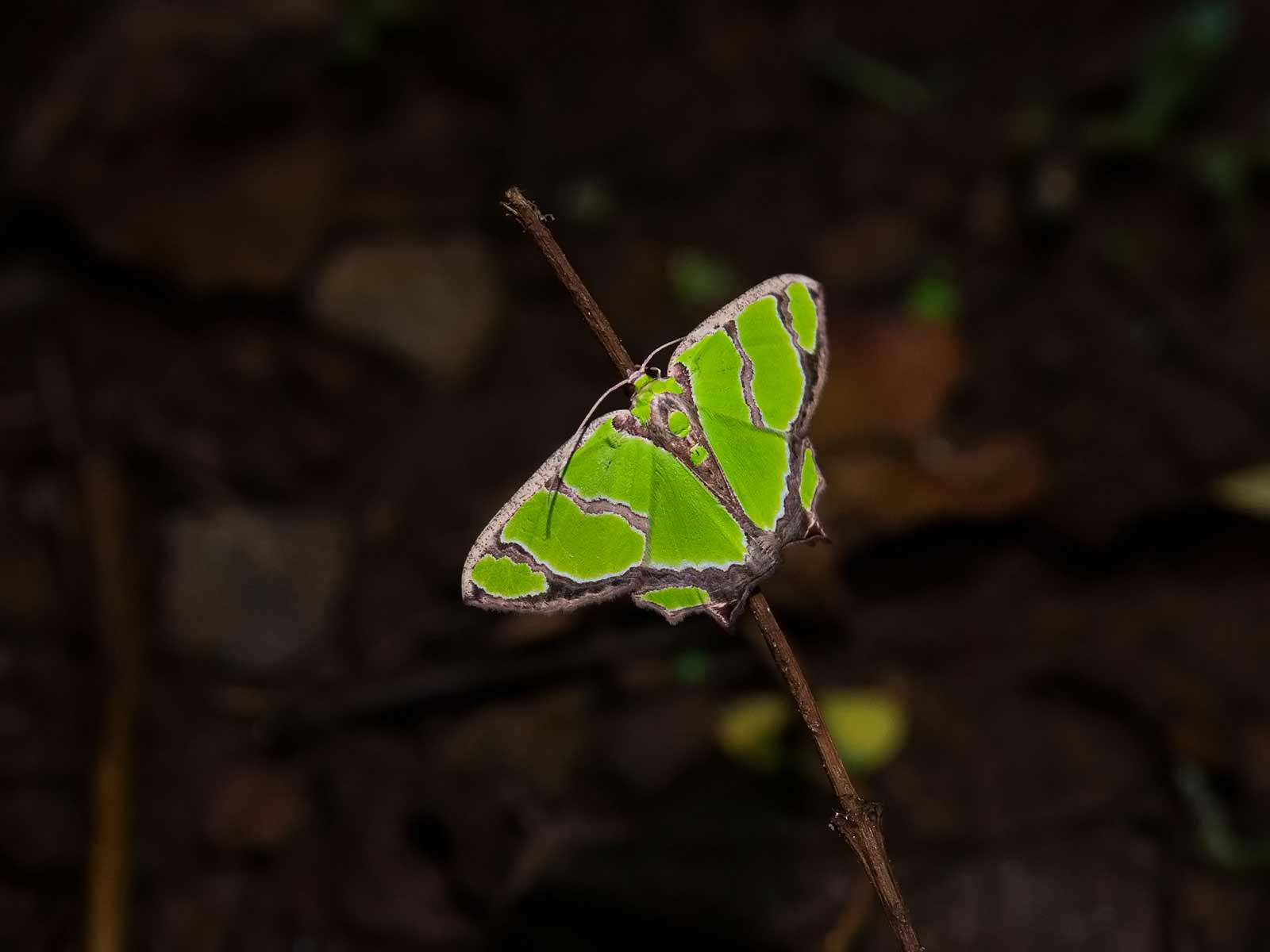
We spotted several more colorful moths near the campsite. Vinod and I had hoped to see an Atlas Moth, but we were thrilled with our experience, having observed over 200 moths in just two nights. This was one of the best wildlife trips we’ve ever taken, with an amazing and like-minded group.